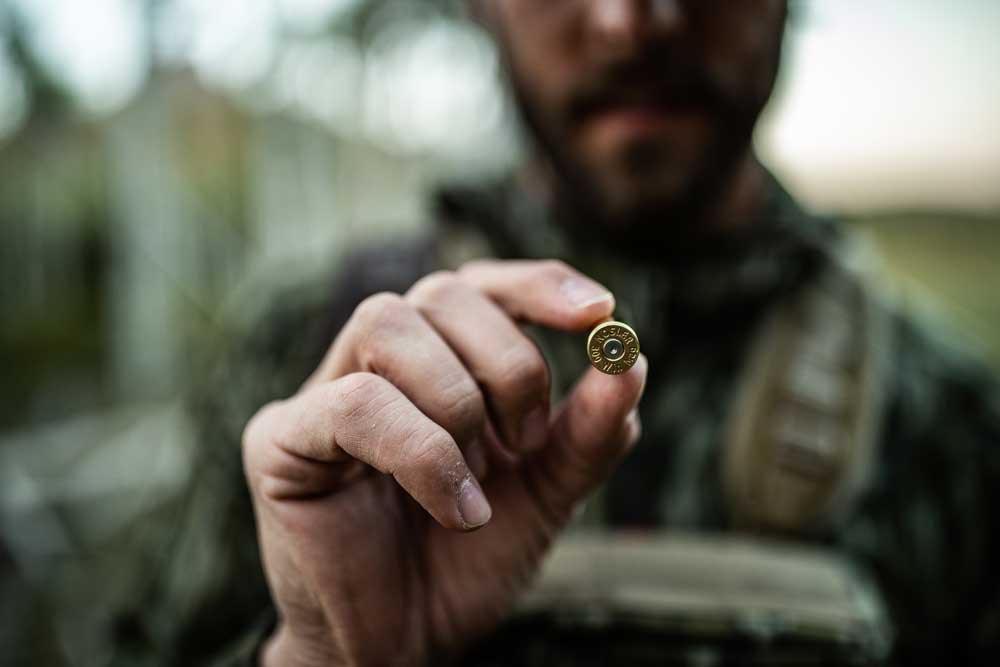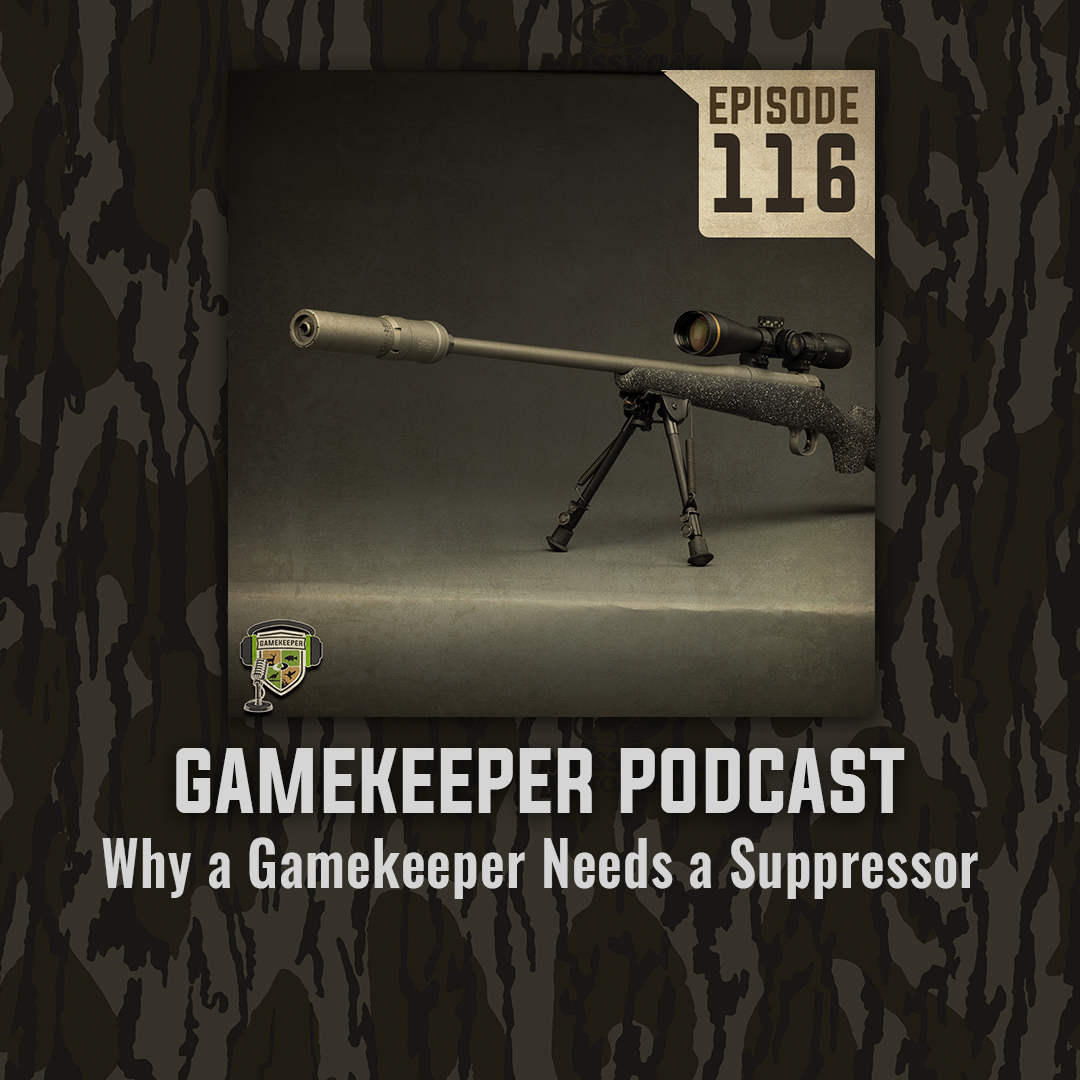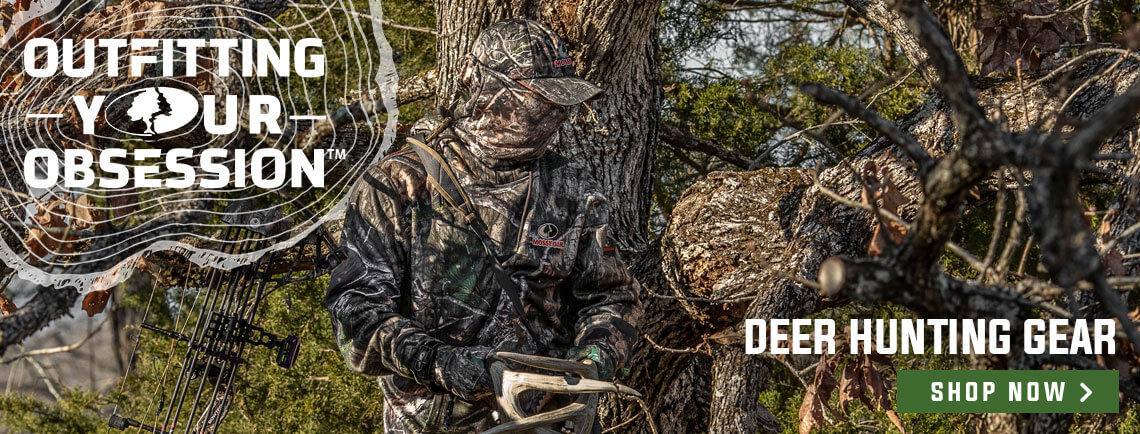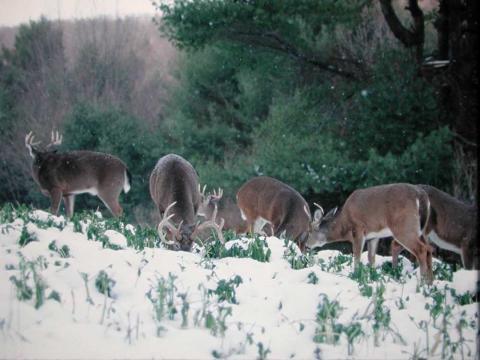William W (Bill) Gabbard
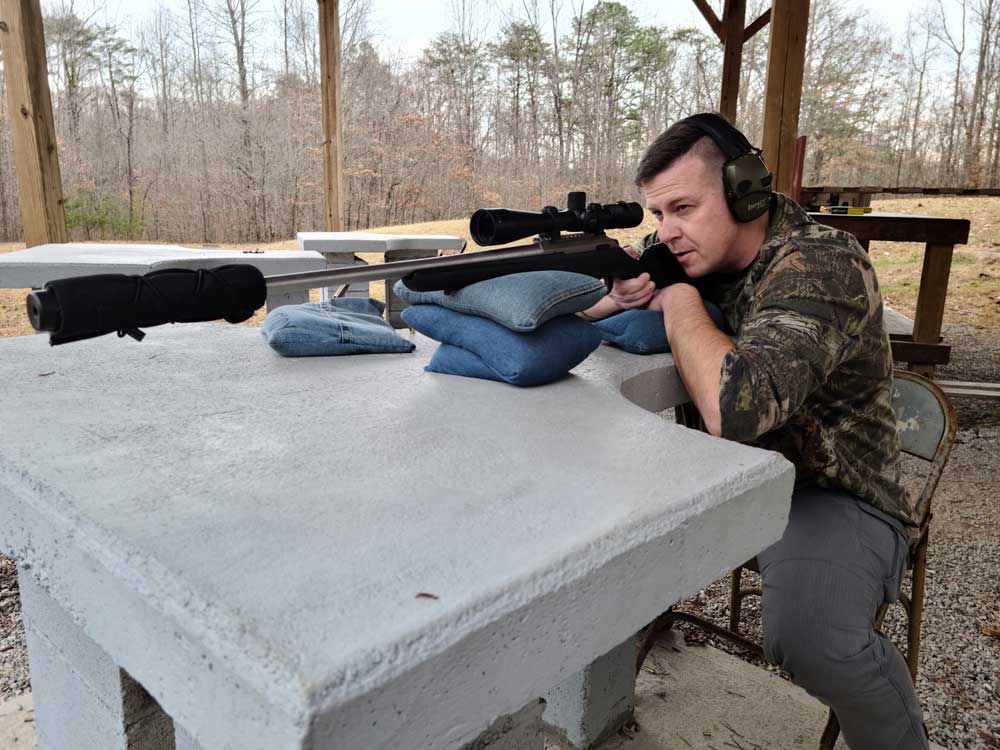
I watched intently as the assassin screwed the silencer on the high-powered rifle, took aim and squeezed the trigger. The bystanders never heard a sound, they just saw the assassin’s target hit the ground! Man was I impressed. We all know that you can’t believe everything you see on the big screen, and the truth is that silencers are really suppressors, and they don’t eliminate all the noise, but they really make a difference. How much difference? Well, that depends on what you are shooting. Rimfire rifles aren’t nearly as quiet as they appear to be in movies and centerfire rifles are quiet enough to make them an interesting choice.
A day at the range with folks shooting suppressed rifles, non-suppressed, and then rifles with muzzle brakes will show you three distinct levels of noise! While the Muzzle Brake on large caliber rifles will increase the sound to the point that you sometimes want to wear earplugs in addition to your earmuffs, the suppressor will decrease the sound that you will find yourself forgetting to use any hearing protection. There are other advantages as well, like not disturbing the neighbors - a big one in this crowded world we live in today.
First things first, buying a suppressor is not as simple as going down to the local outdoor store and picking one up. You must either go to a dealer or through an online dealer. If you buy as an individual you must be photographed, fingerprinted, and submit the forms to the Bureau of Alcohol, Tobacco, and Firearms (BATF). Once you get approved by BATF and pay your $200 you can then pick up your suppressor. There are numerous companies that sell suppressors, and most of them have all the forms you need on hand. Some even fill out the applications for you. The fly in the ointment to me is the fact that once you have jumped through the legal hoops, have paid your money, gone through the background check, received your tax stamp and your suppressor, it is only good for the one suppressor. You can change the suppressor from one rifle to another but if you want more than one suppressor you must go through the entire process for each one.
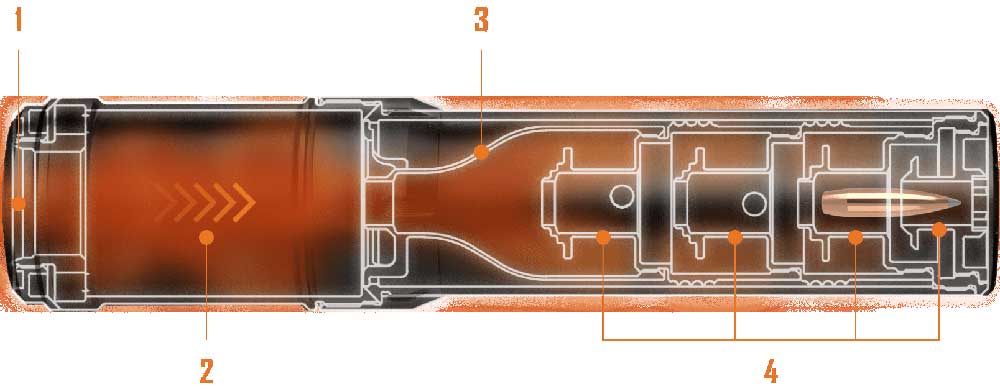
How does a suppressor work?
You could write a book on this question alone, but the short answer is, not a lot different from a muffler on your car. As the hot gases that propel the bullet down the barrel come to the end of the barrel, the suppressor basically slows the gases down and redirects them thus reducing the amount of noise.
How long do suppressors last?
With proper use a quality-built suppressor should last thousands of rounds but abusing anything can shorten its life. Even with proper use the baffles inside can eventually burn out. Nosler, a well-known bullet maker who over the past few years has expanded their field into custom ammo and custom rifles, has now joined the ranks of the suppressor manufacturers. They have built their suppressor so that the baffles inside can be replaced. Not a bad idea if you think about it. If you burn the baffles out just replace them instead of going through the process of buying another suppressor.

Do suppressors affect accuracy?
To an accuracy nut like me, THAT is the $64 dollar question! My first contact on this was Brandon Eversole. Brandon travels extensively shooting in the PRS Series. Speed and accuracy are both critical in this game. Brandon said that he feels that there is negligible impact on either accuracy or velocity whether using the suppressor or not. He said that with his heavy barrel 6.5 there was no noticeable effect on accuracy or point of aim when adding or removing the suppressor. He put me in contact with Jason Greene, a longtime PRS shooter and varmint hunter. Jason told me that he felt that the main advantage of using a suppressor was personal health in the form of hearing protection. Between PRS matches and varmint hunting he shoots anywhere from 6,000 to 10,000 rounds a year. That is a lot of explosions going off right in front of your face. The noise reduction is helpful not only for him but for his fellow competitors and fellow hunters.
When coyote hunting with others, if shooters are using suppressors, life is a lot easier. Jason felt that as far as accuracy, the suppressor helped him shoot better. Firing as many rounds as he does a year any noise that gets to the point of painful is going to eventually affect your shooting. In addition, the extra weight on the end of the barrel helps stabilize the rifle quicker. As far as velocity goes, he says that there was no noticeable difference. When checked with a Lab-Radar unit you may gain as much as 10 to 15 Feet per second with the suppressor. Not really a significant difference!
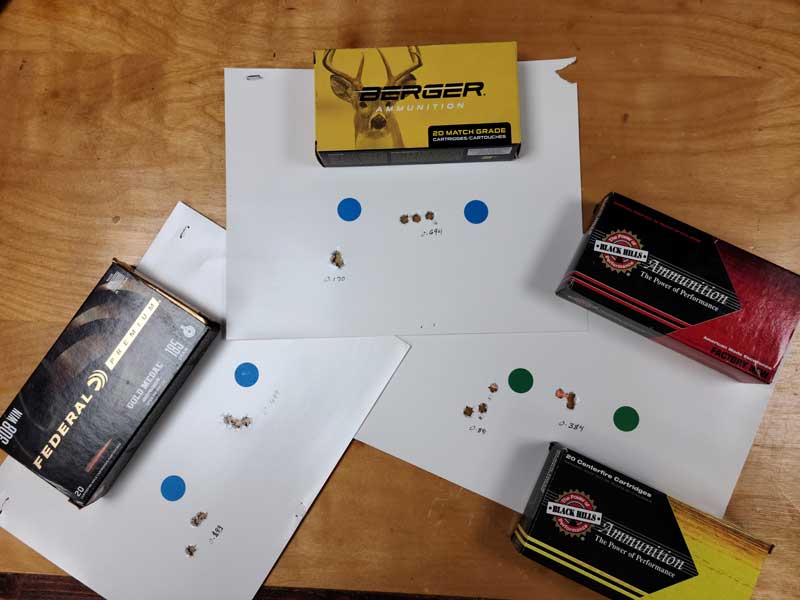
Brandon graciously agreed to bring a stock rifle instead of his heavy barreled match gun and his suppressor down to the local range to do a little testing. We hoped to find out what adding the weight of the suppressor to the end of the barrel would do to the harmonics of the barrel which could affect the size of the groups as well as the point of impact. Brandon brought his stock Tika T-3 CTR chambered in 308 and his Dead Air Sandman TI suppressor. We took 5 different boxes of factory ammo and fired a three-shot group with each type of ammo with the suppressor on. We then removed the suppressor and repeated the test. While both competitors felt the accuracy on their heavy competition rifles wasn’t noticeably affected by the addition of the suppressor, there was a definite effect on the light barreled hunting rifle.
The accompanying chart shows that while two loads performed better with the suppressor, three of them did better without it. The Berger 168 gr Classic Hunter ammo fired an impressive 0.170-inch group when suppressed while the Black Hills 175 gr Tipped Match-King and the Federal 185 gr Gold Medal using Berger 185 Open Tip Match bullets both fired groups under one-half inch unsuppressed. Four of the five loads had a point of impact shift ranging from 1 to 1.5 inches higher, while all five shifted to the left from 1.4 to 1.9 inches.
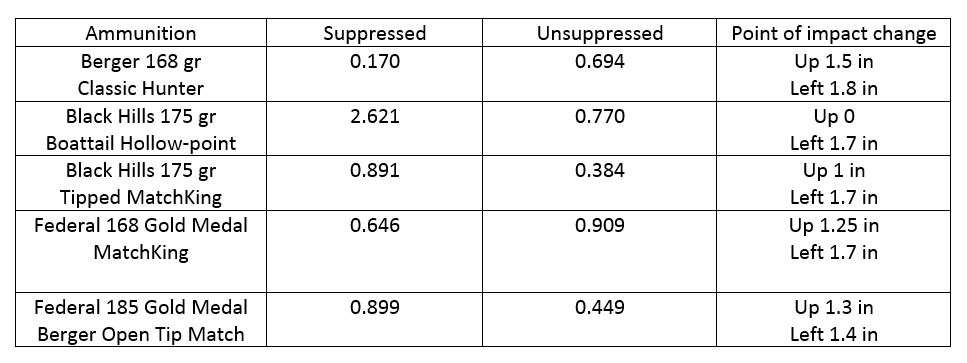
A few years ago, I wrote an article about selecting your ammo to use if you don’t reload. Old handloaders know that with careful work you can fine-tune a load for your specific rifle. Accuracy can be achieved while using a suppressor. Simply put, if you plan to hunt with a suppressor, you need to do your practice, select your ammo, and fine tune your scope with the suppressor in place.
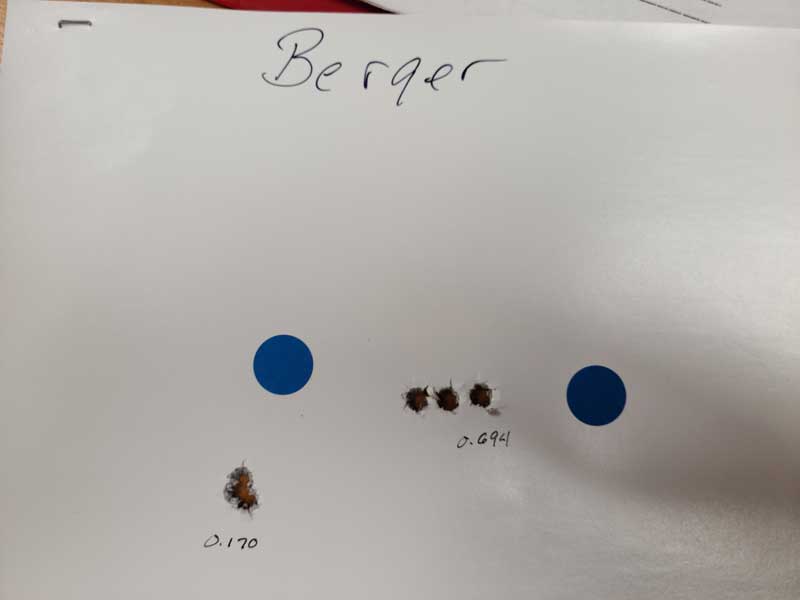
The Nosler Ballistic tip ammo is one that we trust to do the job. We've taken it on many hunts, including our most recent Oklahoma trip. Their suppressor will be released soon.
For more information on suppressors, listen to the Gamekeepers Podcast episode titled, "Why a Gamekeeper Needs a Suppressor."

